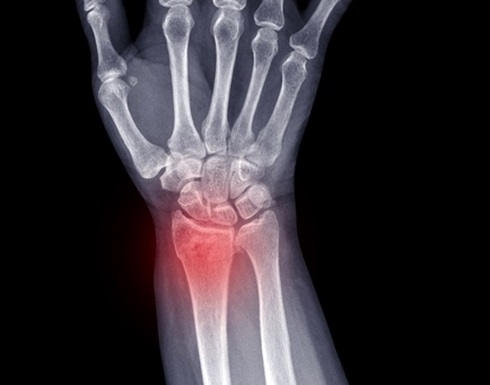AI Diagnoses Wrist Fractures As Well As Radiologists
Posted on 04 Mar 2024
In the field of medical imaging, conventional radiography is the primary method for diagnosing wrist fractures. However, challenges such as suboptimal positioning, technique, patient cooperation, and interpretational errors, often stemming from clinician inexperience, fatigue, or poor viewing conditions, can impact the accuracy of these radiographs. The most frequent interpretational mistakes in emergency departments (EDs) are missed fractures, leading to treatment delays. Physicians, particularly those with limited training in musculoskeletal imaging, often struggle to identify wrist fractures, especially when the signs are subtle. The advancement of deep learning (DL) in automating wrist fracture diagnosis could significantly assist physicians, and recent developments have seen substantial improvements in DL models' image classification error rates. Now, a new meta-analysis reveals that artificial intelligence (AI) algorithms, especially convolutional neural networks (CNNs), are highly effective in detecting wrist fractures from plain X-rays, performing on par with trained healthcare professionals.
The study by researchers at the University Hospital of Southern Denmark (Odense, Denmark) involved analyzing various medical databases from January 2012 to March 2023. The team identified six studies that applied deep-learning AI for diagnosing radial and ulnar fractures using radiographs. The studies collectively included 33,026 X-ray images. Each study employed CNN models trained on a dataset of images and compared their diagnostic accuracy against healthcare experts specializing in fracture diagnostics. The focus on wrist fractures in this meta-analysis was due to their high rate of misdiagnosis in EDs, where their detection on X-rays can be complex.

A comprehensive review of these studies indicated that CNNs, when benchmarked against the consensus of healthcare experts, achieved a sensitivity rate of 92% and a specificity rate of 93%. This finding positions CNN as an effective preliminary tool for reviewing radiographs, potentially reducing missed fractures when followed up by a healthcare professional's examination. However, the study acknowledges the need for further research, emphasizing the importance of external dataset testing, uniform methodologies, and independent expert reference standards to fully ascertain the effectiveness of diagnostic AI algorithms. Future studies should also focus on patient outcomes as a reference point to understand the real-world impact of CNNs in clinical settings.
“For clinicians, AI could potentially be used to enhance diagnostic confidence, especially in fields of radiology. AI algorithms may be particularly useful for less experienced clinicians,” concluded the researchers.
Related Links:
University Hospital of Southern Denmark














